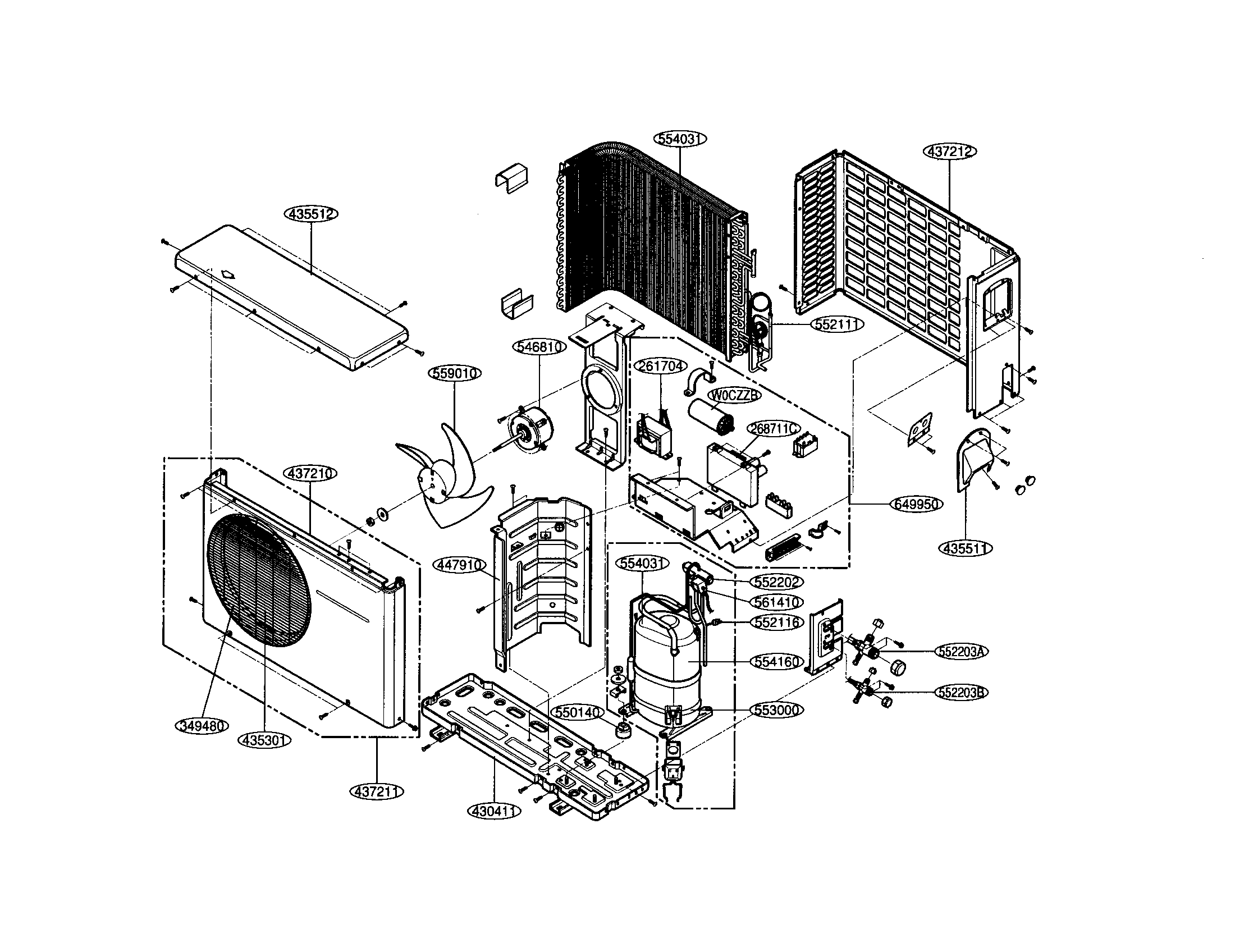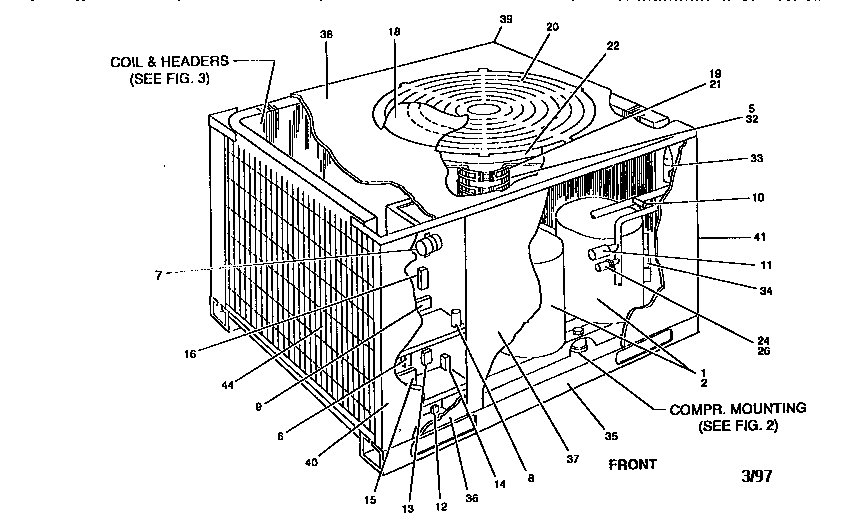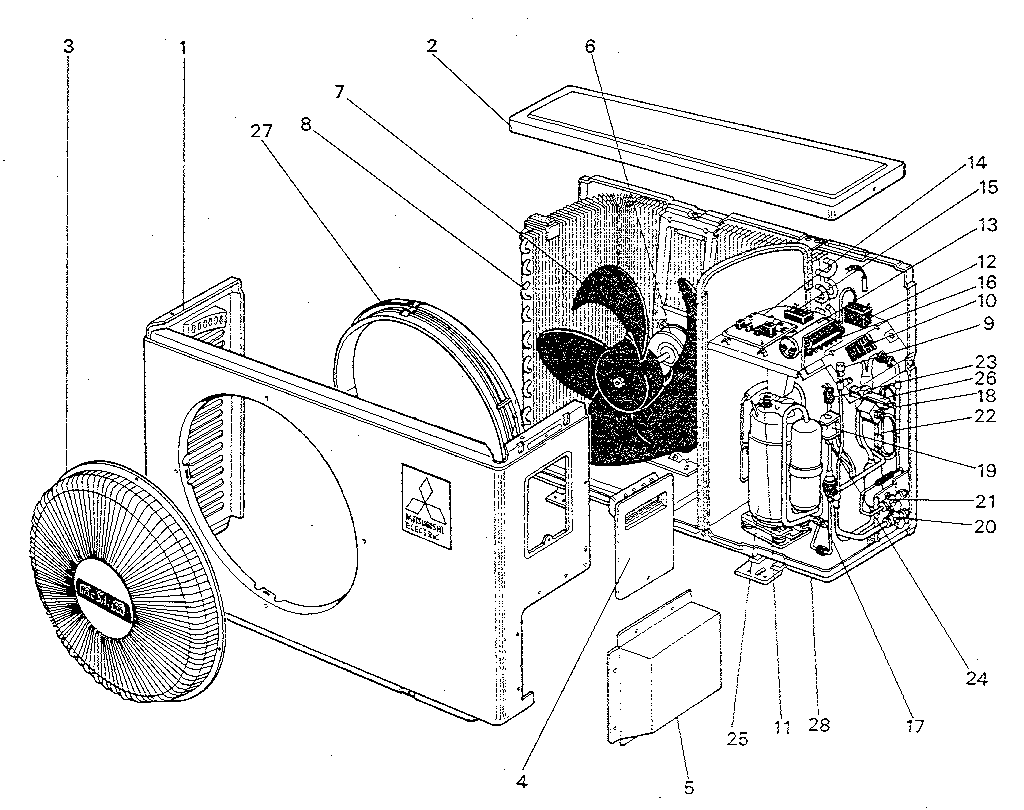Parts Of An Outdoor Air Conditioner Unit

Understanding the anatomy of your outdoor air conditioner unit, often called the condensing unit, is crucial for maintaining peak performance, reducing energy consumption, and ultimately, saving money on your utility bills. This article breaks down the key components, explains their functions, and explores how optimizing each part can lead to significant energy savings.
The Foundation: The Outdoor Unit Cabinet
The outdoor unit cabinet serves as the protective shell for all the internal components. Typically constructed of durable metal or weather-resistant plastic, the cabinet safeguards the vital parts from the elements – rain, snow, hail, and debris. A well-maintained cabinet prevents rust and physical damage, prolonging the life of your entire system. Check regularly for dents or corrosion. Simple maintenance like cleaning debris away from the unit can improve airflow and efficiency.
The Brain: The Compressor
The compressor is arguably the most vital component and the heart of your air conditioning system. Its primary function is to compress the refrigerant gas, increasing its pressure and temperature. This high-pressure, high-temperature refrigerant is then circulated throughout the system to facilitate the cooling process. Because the compressor consumes the most electricity, selecting a unit with a high Seasonal Energy Efficiency Ratio (SEER) rating is critical for energy savings. Consider variable-speed compressors, also called inverter compressors, which adjust their speed based on cooling demand. They are more efficient than single-speed compressors and offer improved comfort and energy savings.
ROI and Energy Star Considerations
Upgrading to a high-efficiency compressor, especially a variable-speed model, can significantly impact your ROI. While the initial investment is higher, the long-term energy savings can be substantial. Look for Energy Star certified units, which meet stringent energy-efficiency guidelines set by the Environmental Protection Agency (EPA). These units typically offer rebates and incentives from local utilities and government programs, further reducing the upfront cost.
The Heat Exchanger: The Condenser Coil
The condenser coil is responsible for releasing heat from the refrigerant to the outside air. It's a series of coiled tubes, usually made of copper or aluminum, with fins attached to increase the surface area for heat transfer. As the hot, high-pressure refrigerant flows through the coil, the fan blows air across the fins, dissipating the heat. A dirty or obstructed condenser coil reduces its ability to release heat, forcing the compressor to work harder and consuming more energy. Regular cleaning is essential. Use a fin comb to straighten any bent fins, ensuring optimal airflow. Professional coil cleaning is also recommended annually.
The Air Mover: The Condenser Fan
The condenser fan draws air across the condenser coil, facilitating the heat exchange process. A powerful and efficient fan is crucial for maintaining optimal system performance. Inspect the fan blades regularly for damage and ensure they are clean and free of debris. A failing fan motor can significantly reduce cooling efficiency and increase energy consumption. Consider upgrading to a high-efficiency fan motor for improved performance and reduced energy use.
Smart Fan Control
Some advanced HVAC systems incorporate smart fan control, which optimizes fan speed based on cooling demand and ambient temperature. This can further reduce energy consumption and improve overall system efficiency. Integrate your smart thermostat and sensors for even greater control.
The Lifeblood: Refrigerant Lines and Valves
The refrigerant lines are the copper pipes that carry the refrigerant between the indoor evaporator coil and the outdoor condenser coil. Proper insulation of these lines is critical to prevent heat loss or gain, which can reduce system efficiency. Inspect the lines regularly for leaks or damage. Low refrigerant levels can significantly impact cooling performance and increase energy consumption. Leaks should be addressed immediately by a qualified HVAC technician. There are specific valves on your air conditioner unit that are necessary to make sure everything is sealed properly.
The Phasedown of R-22
It's crucial to note the phasing out of R-22 refrigerant, which is being replaced by more environmentally friendly alternatives like R-410A. If your system uses R-22 and requires a significant refrigerant recharge, consider replacing the entire unit with a newer, more efficient model that uses R-410A. The price of R-22 has increased substantially due to the phasedown, making replacement a more cost-effective option in the long run.
The Electrical Components
The outdoor unit contains a variety of electrical components, including:
- Contactor: A switch that controls the power to the compressor and fan motor.
- Capacitor: Provides the initial surge of power to start the compressor and fan motor.
- Overload Protector: Protects the compressor and fan motor from overheating.
- Wiring and Connections: Ensure all wiring and connections are secure and free from corrosion.
A qualified HVAC technician should regularly inspect these components to ensure proper operation and prevent electrical problems. Faulty electrical components can lead to system failure and increased energy consumption.
The Control Center: The Control Panel
The control panel houses the electrical components and provides a central point for controlling the system. It typically includes circuit breakers, fuses, and wiring connections. The control panel should be inspected regularly for signs of damage or corrosion. A loose connection or corroded component can lead to system malfunction and potential safety hazards.
Maximizing Efficiency and Savings
Beyond understanding the individual components, several strategies can help you maximize the efficiency of your outdoor air conditioner unit and reduce your energy bills:
- Regular Maintenance: Schedule annual maintenance with a qualified HVAC technician to ensure optimal performance.
- Coil Cleaning: Clean the condenser coil regularly to remove dirt and debris.
- Air Filter Replacement: Replace your indoor air filter regularly to improve airflow and prevent strain on the system.
- Proper Insulation: Ensure your home is properly insulated to minimize heat gain and reduce cooling demand.
- Smart Thermostat: Install a smart thermostat to optimize temperature settings and reduce energy consumption when you're away from home.
- Shade the Unit: Providing shade for your outdoor unit can improve its efficiency, especially during the hottest part of the day.
Smart HVAC Integration
Integrating your HVAC system with smart home technology can provide even greater control and energy savings. Smart thermostats, sensors, and automated controls can optimize temperature settings based on occupancy, weather conditions, and energy prices. Many smart HVAC systems also offer remote monitoring and control, allowing you to adjust settings from your smartphone or tablet.
Government Guidelines and Rebates
Take advantage of government guidelines and rebates to reduce the cost of upgrading to a more energy-efficient air conditioning system. The Energy Star program provides information on energy-efficient appliances and offers rebates and incentives for qualifying products. Check with your local utility company for additional rebates and incentives in your area.
Investing in a high-efficiency air conditioning system and implementing energy-saving strategies can provide significant long-term cost savings and improve the comfort of your home.
By understanding the parts of your outdoor air conditioner unit, you can make informed decisions about maintenance, repairs, and upgrades, ultimately saving money and contributing to a more sustainable future. Remember to consult with a qualified HVAC professional for any major repairs or upgrades to ensure the safety and efficiency of your system.









